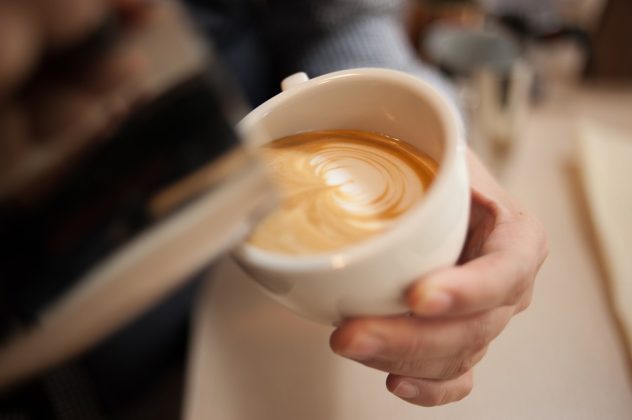We talked about the composition of lattes in our most recent post and compared them to our other coffees, but how much do you know about latte art? Dating back to the early 80s and 90s, it’s truly a form of art that has withstood the test of time. Though latte art was presumed to have first developed in Italy, it only became popular in the United States later on. David Schomer of Espresso Vivace made the classic latte heart design his signature, and since then, the art form took off nationwide.
What is It?
At its core, latte art is a mixture of crema, which is a combination of coffee oil and brewed coffee, and microfoam.
What’s the Technique?
You don’t have to be a professional latte artist to create coffee masterpieces. Let’s start with the technique for creating the java designs: first make sure you correctly prepare your latte with an espresso shot, crema, and microfoam. Before adding the milk, check to see that the crema is properly mixed in with the espresso shot to produce a creamy, brown surface. When the foam from the milk rises, your design will become visible. Timing is everything to create your design, so be positive you’re not pouring too much or too little of the ingredients in your latte.
Latte Styles:
Once you have the basic idea of how to create your latte art canvas, you’re ready for styling your coffee. The two most basic styles of latte art are called free pouring and etching.
Free pouring creates the classic heart and rosetta latte designs, while etching produces more intricate designs, like geometric shapes, flowers, and animals, and are usually made with a coffee stirrer. To make these designs, make sure you either tilt your cup in only one direction. The foam will start appearing on one side of the cup as the milk is poured straight into it. At this point, you should start wiggling pitcher’s spout back and forth. What you do next depends on the design. The heart design is less complicated to produce, while the rosetta picture can take more precision and perfect timing.
Etched latte art has a shorter lifespan than free pouring because the foam dissolves rapidly, so it’s really a style for intermediate to advanced latte artists. Etching can produce a wide variety of geometric shapes and patterns, as well as pictures of animals and flowers. It is produced with the same technique as free pouring, but your timing needs to be exactly on point, or the designs won’t turn out.
Are you craving lattes yet? Check out our drink menu for our wide array of lattes.



